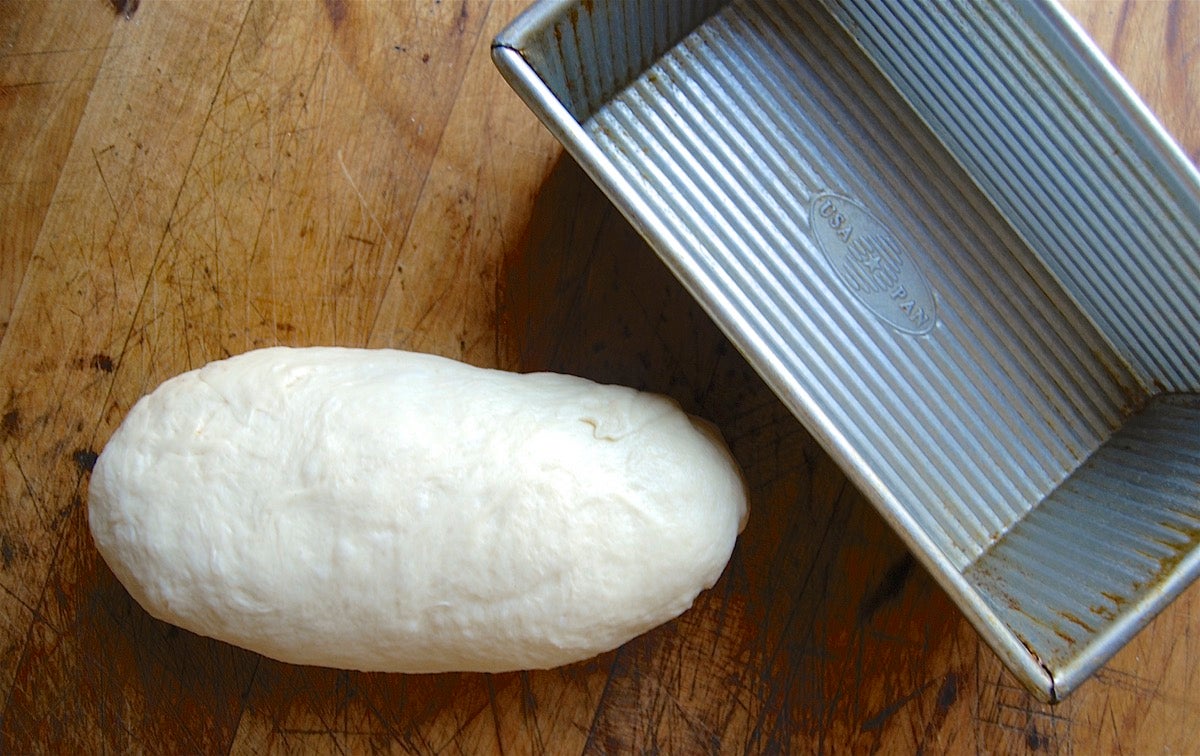


A question posed by a reader in a recent issue of Sift magazine covers familiar territory for many of us yeast bread bakers: how to deal with over-proofed dough. "Every once in a while I have over-proofed dough. So what can I do with it? I just hate waste and don't want to throw it away," writes Colleen Guertin.
Thankfully, there's no reason to throw away a batch of yeast dough that's simply risen too much.
Sift food editor Susan Reid writes, "Most yeast doughs have a third rise in them, as long as the yeast used in the recipe is either active dry or a type of instant yeast that isn't designed for one quick rise (such as rapid-rise yeast). If you come back to your rising loaf and see that it's oversized and puffy, turn the dough out of the pan and reshape it. Return the dough to the pan and set a timer for 20 minutes (each rise goes faster than the last). Put the bread in the oven when it's no more than an inch above the edge of the pan, so there's some energy left in the dough for nice oven spring."
Let's put that advice to work here. We'll make two loaves of bread using our Classic Sandwich Bread recipe. Note: This technique generally doesn't work with sourdough bread, which has usually already undergone quite a long fermentation process before its final rise.

Here's the risen dough, ready to shape and put into the pans.

Notice there's a lot of room for the dough to expand here. If your log of shaped dough fills the pan full or nearly so to begin with, you need a larger pan.
Broadly speaking, any recipe using 3 1/2 cups of flour or less can be baked in an 8 1/2" x 4 1/2" loaf pan; more than 3 1/2 cups of flour, move up to a 9" x 5" loaf pan.

Let the loaves rise.
Wait — you don't use a plastic shower cap (or bowl cover) to tent your rising yeast loaf? Get with the program!

Perfect. The loaves have risen 1" over the rim of the pan. Pop them into your preheated oven and they'll continue to rise into nicely domed loaves.
But wait — what if you space out on Facebook, or have to make an emergency run to school to deliver your kid's basketball uniform?

Whoops. This loaf, towering a good 4" over the rim of the pan, is severely over-risen.
What would happen if you baked this bread as is? We'll see later on. But for now, let's perform an emergency rescue.

First, deflate the dough. It actually feels kind of satisfying to press all that air out; you know, like you're breaking the rules and getting away with it.

Next, reshape the dough into a loaf.

Place it in its pan.

Let the loaf rise no more than 1" over the pan's rim before popping it into your preheated oven.

Here are our two baked loaves, side by side. On the left: the "remembered" loaf, baked at the proper time. On the right: the forgotten loaf, deflated and allowed to rise again before baking.
Notice the loaf on the right, with the extra rise, actually rose a bit higher — thanks to the extra yeast activity inherent in two rises rather than one. And the flavor? No discernible difference between the two.
Is it possible to build an extra rise right into your recipe? Sure; but it's easier to let the dough rise twice in the bowl, rather than twice in the pan.
And what about that over-risen loaf that went right into the oven without being deflated and reshaped?

How the mighty have fallen!
Because the bread had risen so much before it hit the oven's heat, there was no more capacity for additional expansion in the oven. It rose; it fell; it collapsed. Still tastes good, but not a pretty picture.
So, can over-proofed dough be saved? Absolutely. Simply follow the steps above, and you can turn this potential culinary disaster into a perfectly lovely loaf!
Interested in more great baking advice from the experts — along with incredible recipes, great writing, and breathtaking photography? Find our Sift magazine at your local Costco, Whole Foods, Barnes and Noble, Wegmans, Sam's Clubs or other retailers. Or purchase it online.

